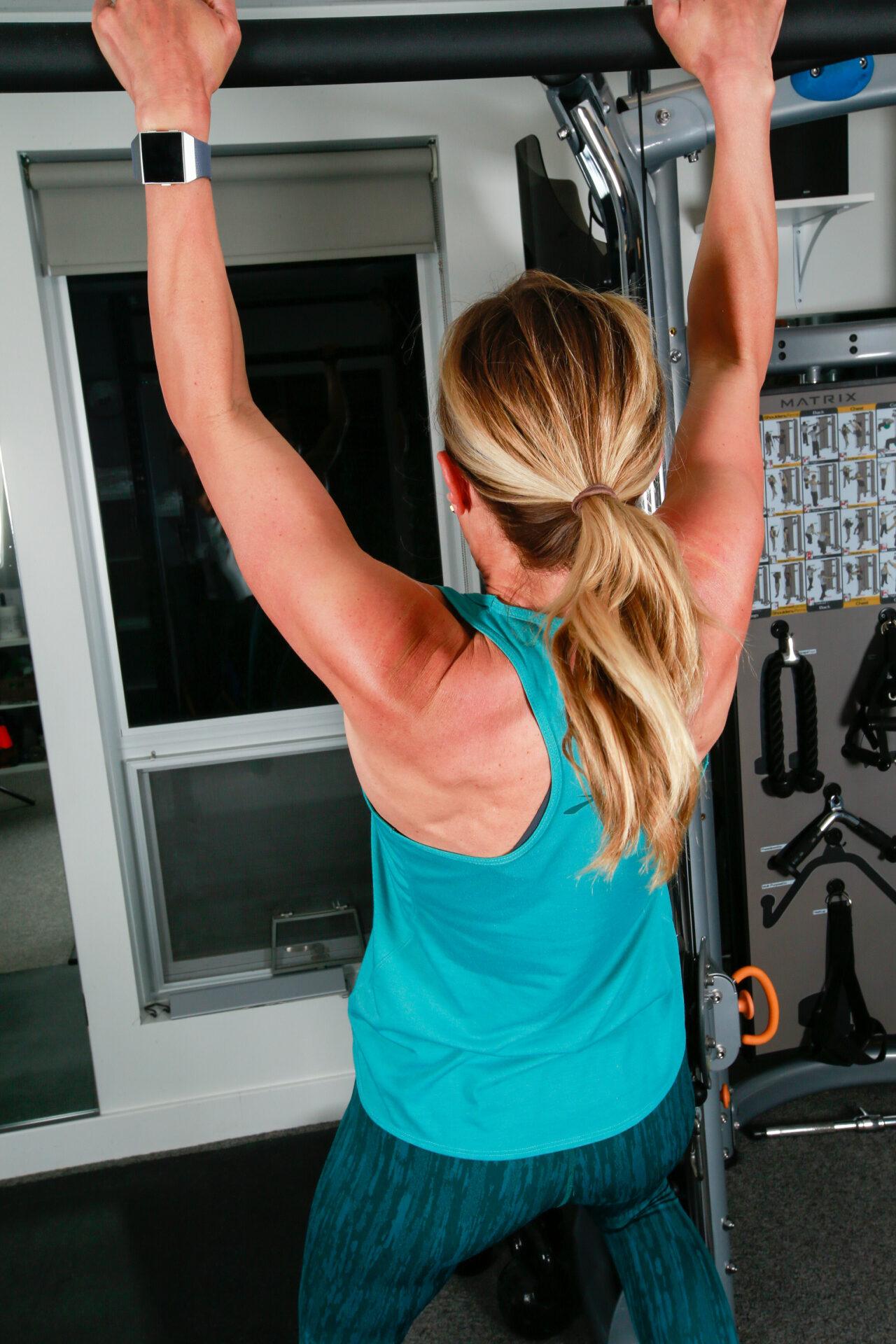By: Dr. Erica Tran, PT, DPT, OCS
If you caught my Instagram Reel “Top 3 Things I’m NOT Falling For Anymore”, you already know it’s time to challenge outdated beliefs holding women back especially when it comes to strength training. But for young female athletes, pregnant women, postpartum warriors, and anyone dealing with pelvic floor concerns, these myths aren’t just limiting; they can cause confusion and hesitation around lifting weights and training hard.
Let’s clear the air with evidence-backed truths and practical advice so you can train smart, stay strong, and protect your pelvic health.
Myth #1: “Shoulder pain? Just rest it.”
Rest isn’t always the answer. While pain is your body’s way of communicating, prolonged inactivity can weaken muscles, including those critical for grip strength, and delay recovery. Grip strength is a foundational marker of overall upper body health and function, influencing not only hand performance but also shoulder stability and kinetic chain efficiency.
Research supports modifying movement, incorporating mobility work, and maintaining strength (including grip and shoulder muscles) as a safer route toward healing. For women, especially those balancing hormonal fluctuations or postpartum recovery, gradual strength gains can enhance joint stability, improve functional capacity, and reduce injury risk. So, don’t fear moving, just move wisely. For more on why grip strength matters, check out this article I wrote.
Myth #2: “Upper-body strength isn’t for women.”
This myth needs to be retired for good. Women (whether athletes, recreational lifters, or pregnant/postpartum) absolutely benefit from upper-body strength training. Exercises like pull- ups, rows, and overhead presses do more than sculpt muscle; they improve posture, enhance sport performance, and play a critical role in core stability and injury prevention. For women with pelvic floor concerns, strong upper-body and trunk musculature helps manage intra- abdominal pressure and reduces compensatory strain on the pelvic floor.
As I wrote in this blog on heavy weightlifting during pregnancy, emerging evidence shows that resistance training including heavier lifting is not only safe during pregnancy but also beneficial when appropriately modified. One 2021 study published in Sports Health followed pregnant individuals performing moderate to high-intensity strength training, including exercises like deadlifts and overhead presses, and found no significant adverse effects on maternal or fetal outcomes. Instead, participants experienced improved musculoskeletal function and fewer physical complaints.
Bottom line? Women’s upper-body strength isn’t just important—it’s essential. And when combined with proper breathing mechanics and pelvic floor awareness, lifting heavy becomes not only safe, but empowering
Myth #3: “Deadlifts hurt your back.”
Deadlifts have earned a bad reputation, but often unfairly. When performed with proper technique and an appropriate load, deadlifts strengthen the posterior chain muscles (glutes, hamstrings, and core) and actually promote spinal stability rather than compromise it. For female athletes, especially those returning postpartum, deadlifts can be a powerful tool for rebuilding functional strength and restoring confidence in movement.
In my blog post, I break down how to properly coordinate your breath and engage your pelvic floor during squats and deadlifts. Managing intra-abdominal pressure (IAP) through breath control and bracing is key. Without it, excessive pressure can push down on the pelvic floor, increasing the risk of dysfunction, prolapse, or urinary incontinence. But when these elements are aligned, deadlifts become not just safe, but deeply restorative and empowering.
What Science Says About Pelvic Floor Health and Strength Training
Recent research reveals a complex but hopeful relationship between strength training and pelvic floor function. Female powerlifters and weightlifters show surprisingly high rates (41–55%) of urinary incontinence, mostly due to elevated intra-abdominal pressure combined with poor pelvic floor and breathing control. Yet, a crossover trial with young women found no immediate drop in pelvic floor muscle (PFM) strength or endurance after high-intensity lifts, suggesting these muscles tolerate load well when engaged properly.
Pregnancy and postpartum add layers of complexity. Regular exercise during pregnancy correlates with stronger pelvic floors and less urinary leakage. Meta-analyses show that pelvic floor muscle training (PFMT) during pregnancy can reduce incontinence risk by nearly 30% and decrease severe perineal tears by half. After childbirth, patience is key: many postpartum women safely return to moderate lifting between 12 weeks and 6 months postpartum—but only after rebuilding core and pelvic floor strength with proper guidance.
Practical Tips to Train Strong AND Support Your Pelvic Floor
- Incorporate Daily Pelvic Floor Muscle Training (PFMT): Think of your pelvic floor like any other muscle group. Strengthen it with intentional exercises and quick “knack” contractions before lifting heavy. This pre-activation has been shown to reduce urinary leakage during activities like volleyball and weightlifting.
- Master Your Breath: Diaphragmatic breathing paired with gentle pelvic floor engagement helps manage intra-abdominal pressure. This reduces strain on the pelvic floor during lifts and protects against prolapse or leakage.
- Modify Loads and Movements When Needed: Especially during pregnancy or early postpartum, focus on bodyweight and stability exercises—pelvic tilts, dead bugs, glute bridges—before adding heavier loads. Listen to your body and seek clearance from a pelvic floor physical therapist (PFPT) when ready to progress.
- Focus on Core Stability, Not Crunches: Avoid traditional crunches postpartum, which may worsen diastasis recti and pelvic dysfunction. Instead, build your core with planks, bird dogs, and reverse planks that engage deep “canister” muscles supporting your spine and pelvis.
- Get Professional Guidance: If you experience persistent leakage, pelvic pain, or prolapse symptoms, a PFPT can assess your pelvic health, tailor exercises, and coach you on safe return to lifting.
Final Thoughts
The message is clear: you don’t have to sacrifice pelvic health for strength, nor should you shy away from lifting because of fear or misinformation. The right approach blends intelligent training, dedicated pelvic floor work, and mindful breathing to help you become your strongest, healthiest self—whether you’re a young athlete, pregnant, or navigating postpartum recovery.
Strength training is a powerful tool for your body and mind—not a threat. Challenge the myths, embrace the science, and train with intention.
If you’re ready to lift smarter, support your pelvic health, or return to strength safely postpartum, I’d love to help. Book an appointment with us in Lafayette or Boulder and let’s build your strength from the inside out.
References
- Zhang et al., 2024. Effect of Pelvic Floor Muscle Training on Urinary Incontinence in Pregnancy: A Systematic Review and Meta-Analysis.
- Skaug et al., 2023. Pelvic Floor Function in Elite Female Athletes: Implications for Training and Prevention.
- Hopp et al., 2022. Diaphragmatic Breathing and Pelvic Floor Coordination in Athletic Populations.
- PubMed Central, 2023. Acute Effects of Heavy Lifting on Pelvic Floor Muscle Strength.
- Systematic reviews on urinary incontinence prevalence in female powerlifters and
weightlifters, 2022.
- AMA Manual of Style, 11th Edition.

